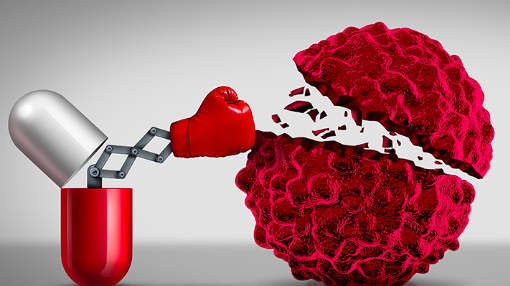This Powerful Cannabinoid and its potential anti-cancer support
(By ACS Laboratories)
Little-known cannabinoid CBDHQ or also known as HU-331 has been making big news lately for its potential cancer-fighting properties.But what is CBDHQ/ HU-331 exactly? Where does it come from? And does HU-331 have meaningful potential as a cancer-fighting drug?
Let’s dive into the research and discuss everything you need to know about HU-331, including how it affects your whole-body health.
What is HU-331, and How is it Made?
HU-331, sometimes called cannabidiol hydroxy-quinone (CBDHQ), is a quinone drug synthesized from CBD. While it might seem like the new kid on the cannabis block, this compound has been circulating around laboratories for more than 50 years.
Hebrew University (where the “HU” comes from) first synthesized HU-331 back in 1968 by oxidizing CBD using potassium hydroxide. Since then, scientists have synthesized HU-331 countless times looking for ways to employ its antibiotic and anti-cancer effects.
What Uses Do Quinone Compounds Like HU-331 Have?
Both natural and synthetic quinones display wide use as therapeutic drugs because they display biological activities that make them highly effective. The problem, however, is that most quinones also come with severe side effects like heart toxicity. HU-331, on the other hand, is shown to have high efficacy against human cancer without the toxic risks.
On a completely different note, quinones also appear often in manufacturing. For example, quinones are used for the large-scale production of hydrogen peroxide, and many natural and artificial dyes and pigments.
How Does HU-331 Work in the Body?
HU-331 works specifically to inhibit type II topoisomerase isoforms, also called TOP2 for short. To understand the important role of TOP2, let’s get nerdy about DNA for a minute.
You might remember from science class that DNA molecules are made up of two strands that wind around each other to form a shape known as a double helix. TOP2 isoforms cut into both strands of our DNA simultaneously, causing what scientists call a “double-stranded break.”
On one hand, this is good because it resolves knots and tangles in the DNA strands, which is critical for our bodies to form new, healthy cells. However, it can also cause bad cells to multiply without abandon, such as cancer.
Here is where HU-331 comes in. HU-331 works as a TOP2 isoform inhibitor, so it blocks the activity of the TOP2 enzyme and stops it from forming new cancer cells. TOP2 isoforms inhibitors are well-known in studies for their potential in shrinking tumors and helping to kill cancer cells.
What Do Scientists Know About the Potential Health Benefits of HU-331 Compared to Other Quinone Compounds?
Quinonoid compounds known as anthracyclines are currently used as antibiotics and anti-cancer drugs. The best-known members of this family are daunorubicin and doxorubicin. While effective disease-fighters, anthracyclines can cause severe side effects, particularly heart damage.
Unfortunately, their disease-fighting abilities are far too widespread. Instead of only attacking cancer cells, anthracyclines also damage healthy cells along the way. Fortunately, scientists started analyzing HU-331’s therapeutic potential to determine its toxicity levels. Both in vitro and in vivo studies indicate HU-331 may be much safer than other quinoid compounds because it can target cancerous cells without harming the rest of the body.
What Do Scientists Know About Its Anti-Cancer Properties?
To understand HU-331’s anti-cancer potential, let’s back up to the lab that created it in the first place. In 2001, the Hebrew University lab, which first synthesized HU-331 in the late 1960s, did so again to analyze its potential anti-cancer properties. This time, they hoped to combine the anti-cancer base properties of quinones that we’ve discussed with the natural healing power of nontoxic cannabinoid molecules to produce a safe and effective therapeutic.
In that study and additional studies over the years, scientists identified that HU-331, an oxidized derivative of CBD, can actively reduce tumors and work against human cancer cells in culture and in vivo tumor grafts in nude mice. A study published in 2007 concentrated on HU-331’s specific mode of action, the inhibition of TOP2 enzymes.
As we mentioned earlier, scientists believe inhibiting TOP2 isoforms could lead to a breakthrough in developing new anti-cancer drugs. Most anti-cancer drugs focus on trying to start a process called apoptosis, one of the most common forms of cell death. Apoptosis is how the anthracyclines quinone group we mentioned earlier effectively kills cancer cells—and oftentimes healthy cells along with them.
In the study, however, HU-331 worked to successfully kill cancer cells without using this apoptosis process. Instead, it inhibited the TOP2 isoforms in the cancer cells, which stopped them from multiplying and making more bad cells. HU-331 didn’t cause any cell damage or death in the body.
In addition, mouse model systems demonstrated HU-331’s ability to shrink tumors without causing cardiotoxicity. Studies tested HU-331 in a series of cancer types and found it worked successfully for many forms, including Burkitt’s lymphoma, T-cell lymphoma, glioblastoma, breast cancer, prostate cancer, lung cancer, and colon cancer. As scientists increased the levels of HU-331, the better it worked and more cancer cells died.
Burkitt’s lymphoma and T-cell lymphoma were the most sensitive, and HU-331 reduced them both by 50%. These results support the fact that HU-331 effectively inhibits cancer cell growth in a wide range of cell types.
What Other Properties Have Studies Revealed?
Given the reactivity of quinone compounds, an earlier 1991 study also examined the ability of HU-331 to inactivate CYP450 enzyme activity in mice. CYP enzymes play an important role in how our bodies process medications. If we can find ways to inhibit these enzymes, then our bodies can metabolize certain drugs better, and we can feel their therapeutic effects faster and more intensely.
The study found that HU-331 worked better than CBD did on its own when it came to inhibiting CYP enzymes, which means it could provide a more potent delivery of anti-cancer drugs and get them into our systems faster.
What Type of Psychoactive Effect Does It Deliver?
Because HU-331 is a product of CBD, the most abundant non-psychoactive cannabinoid in the cannabis plant, it doesn’t seem to cause any psychoactive effects.
Is It Safe?
While other quinonoid compounds are effective in treating many different forms of cancer, their side effects—the most severe being cumulative heart toxicity—limit their use. HU-331, on the other hand, is more potent and less toxic because it has a better focus. This makes it a safer alternative for medical treatment.
However, we should note there are other possible proteins and enzyme targets in our bodies that HU-331 could affect that have not yet been identified yet. When it inhibits TOP2 enzymes, HU-331 likely interacts with the ATPase domain of TOP2.
ATP is the principal molecule that stores and transfers energy between our cells, similar to how we use banks to store and transfer money. While HU-331 seems to work well to reduce cancer cells, disrupting the ATP energy-transfer process in other cells could cause problems. We need to study HU-331 further to see if it affects the ATPase domain of other areas.
At ACS, we look forward to exploring the research behind HU-331, particularly its anti-cancer properties. Hemp and cannabis innovation are crucial to naturally empowering human health. We hope you enjoyed this article..


